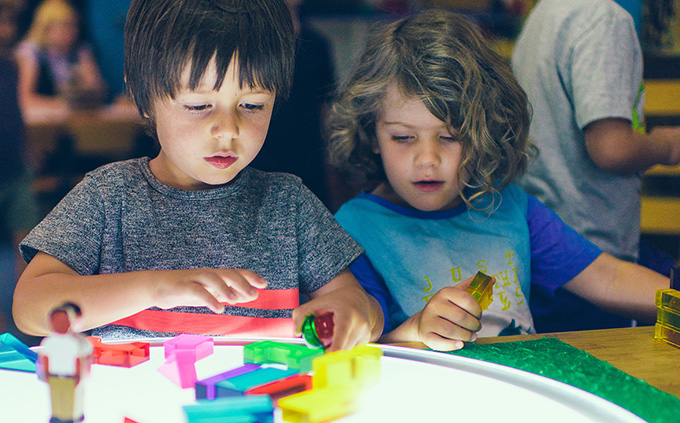
Should we see art and culture as the preserve of adults? On the contrary, these areas are essential to nurture the thoughts and imaginations of young children, believes psychologist Sophie Marinopoulos. The idea is at the center of his report on the cultural health of toddlers, submitted to the Ministry of Culture in August 2019. Not only does this help to awaken the little one but it also rebalances the relationship between parents and children. , strongly disturbed lately.
Indeed, the confinement due to Covid-19 has upset the digital habits of families. The intra-family rules on the use of digital tools by the little ones have become more flexible and, with the summer holidays, questions are increasing. How to promote the active attitude of children towards digital? And if the screen is taking up more and more space in their lives, how can they be rethought?
In an interview that she recently gave us, Sophie Marinopoulos, founder of Pâtes aueurre , insists on the importance of not opposing “screen” and “culture”. Digital tools are truly part of the environment in which children grow up, and, like other media, can participate in the development of the toddler. On condition that you think about its support, the choice of content and its uses.
Combine tangible and digital
The main criticism made of screens on the development of the toddler concerns the lack of interaction, in short the lack of human exchanges, verbal and non-verbal, and the manipulation of real objects. But in recent years, editors of digital content for children have integrated reviews and developed new interfaces, combining tangible devices and mobile screens.
Enough to refocus on the confrontation between the child and the real world, driven by the new education movements for over a century. Pedagogues such as Maria Montessori, Jean Itard or Friedrich Fröbel had moreover developed the teaching material which accompanied the learning of children based on “doing” and practice.
For young children, manipulations are as essential as social interactions in the development of their understanding of the world, as underlined by the art initiation center for 0-6 year-olds A Thousand Forms , inaugurated in Clermont-Ferrand il Just a year ago: “It is through gesture and interaction with a new environment that the child will be led to discover art”.
This is how today, wooden objects, paper folds or even printed shapes (on a 3D printer) come alongside (or not) smartphones and tablets. These interactive devices invite the child to play with (or without) the screen, alone or with others, while manipulating real world objects. In the field of human-machine interactions, this is called mixed or augmented environments.
At the border between the real and the virtual, these devices of a new kind emphasize play, in order to encourage interactions. We can cite the work of the digital creation house Sonic Solveig to introduce young children to classical music, or that of the young start-up OVAOM, which offers children the opportunity to handle original digital musical instruments.
Another playful approach, that of story telling. Thus, the Volumique publishing house offers games or tales to interact with the screen thanks to paper folds, made beforehand by the child. As for the Wakatoon application, it allows you to color images which then come to life thanks to a recognition system on the camera of the smartphone or tablet.
It is interesting to note that some of these digital applications take up the codes of board games by proposing rules and roles in order to encourage the child to live an experience as creative as it is playful.
Interaction in motion, a source of learning
Other devices offer the little ones to learn, without a screen, computers and technology. This is the case with the Colori method, which offers children from 3 years old many manual activities (coloring, stickers, robotics), while the duo formed by KutiKuti invites the child to cut, paste and color to make different objects, such as a lamp or a mini town.
Faced with the proliferation of applications for children, available on specialized platforms, these devices remain marginal. They at least have the merit of opening the way to new possibilities in which the interaction in motion with digital tools is at the heart.
Supporting the digital use of toddlers
Using digital technology with young children, between 3 and 5 years old, is therefore to question the place of screens in children’s lives, and above all to insist on the social interactions that this can generate. A message also sent in the report published in December 2019 by the High Council of Public Health. This report, based on numerous scientific publications, particularly emphasizes the importance of the choice of content and support for uses.
Of course, the digital tool makes it possible to develop the autonomy of the child thanks to the immediate feedback on action. However, it is interesting to observe that all these uses put forward the stronghold of mediators, whether it is for use at school or at home. It is therefore not a question of replacing the human relationship, but rather of proposing new creative interactions, thanks to digital technology.
Author Bio: Marion Voillot is a PhD Student at the Center for Interdisciplinary Research (CRI)
